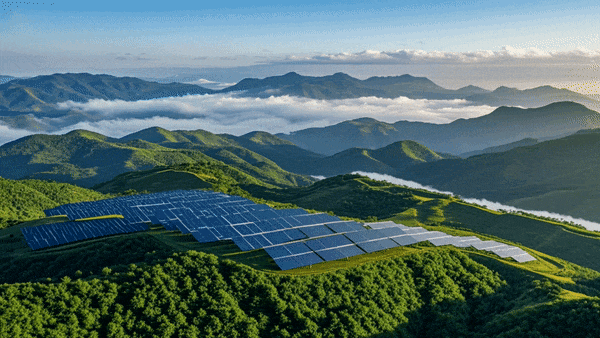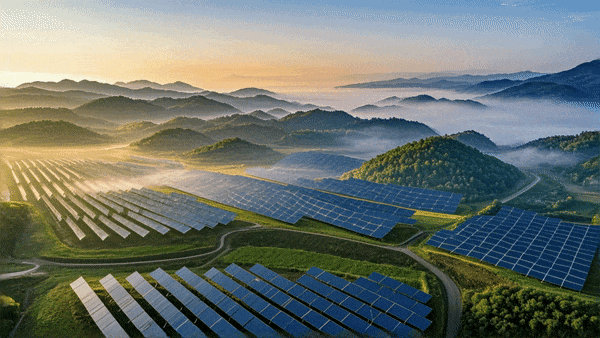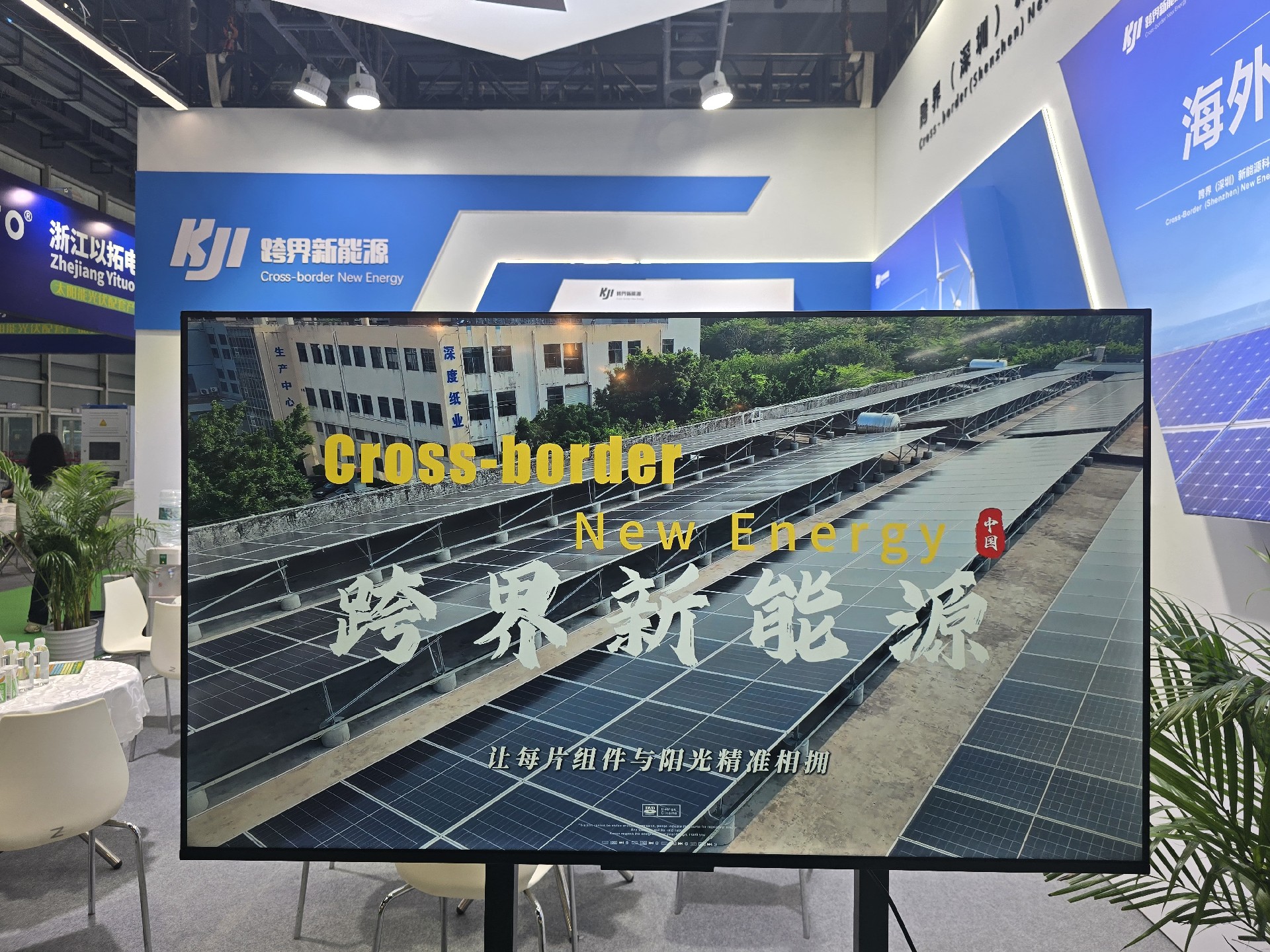Insight into the latest trends in the photovoltaic industry: the path of breaking through and innova
In the wave of global energy transformation, the photovoltaic industry, as a key force, is undergoing profound changes. In recent years, the photovoltaic industry has developed rapidly,
and China has established the world's most competitive industrial chain system, with production and installed capacity ranking first in the world for more than 10 consecutive years.
In the first half of 2025, the country's newly installed photovoltaic capacity will be 212.21GW, a year-on-year increase of 107%; The global installed capacity of photovoltaics is expected to reach 570-630GW,
with China accounting for over 45%, continuing to dominate the global clean energy market landscape. But behind the prosperity, the industry also faces many challenges and changes. Let's delve into the latest trends in the photovoltaic industry together.
1、 Technological innovation leads, N-type batteries become mainstream
Leading the world in technological iteration speed has become a distinctive feature of the photovoltaic industry. Nowadays, N-type batteries have successfully replaced P-type batteries and
become the mainstream in the market, with TOPCon technology accounting for over 75% of production capacity. At the same time, cutting-edge technologies such as HJT and BC are also
accelerating their commercialization process.
In the future, photovoltaic technology will develop towards higher conversion efficiency and lower costs. For example, the research and development of HJT and perovskite stacking technology
have attracted much attention, and Longi Green Energy has made significant progress in this area, with a laboratory efficiency of 33.7%. This technology is expected to further break through the
existing bottleneck of conversion efficiency, significantly reduce the cost of photovoltaic power generation, and promote the photovoltaic industry to move towards a new stage of development.

2、 Policy guidance against internal competition, industry ecology needs to be reshaped
Currently, the photovoltaic industry is facing severe challenges such as overcapacity, price competition, and international trade barriers. As of the end of 2024, the production capacity of each link in
the main industry chain has exceeded 1200GW, while the global demand in 2025 is only about 580GW, with supply exceeding demand by more than double, resulting in significant price fluctuations.
Component prices once fell below 0.6 yuan/watt, severely squeezing the profit margin of the entire industry chain.
To address these issues, there has been a strong call at the policy level to "oppose internal competition". The sixth meeting of the Central Financial and Economic Commission emphasized the governance
of low price and disorderly competition among enterprises in accordance with laws and regulations; The Ministry of Industry and Information Technology convened a symposium with enterprises to clarify
the need to rectify disorderly competition in the photovoltaic industry in accordance with the law; The National Development and Reform Commission and the State Administration for Market Regulation
have released the "Draft Amendment to the Price Law of the People's Republic of China (for soliciting opinions)" to improve the criteria for identifying low-priced dumping.
Under policy guidance, industry self-discipline is also being strengthened. Leading enterprises such as Longi and Tongwei jointly propose that the bidding price of modules should not be lower than 0.68 yuan/watt,
and promote the development of the "Photovoltaic Module Price Index" to guide the market back to rationality.

3、 Diversified application scenarios and great potential for distributed photovoltaics
With the advancement of technology and the reduction of costs, the application scenarios of photovoltaics are becoming increasingly diversified. In addition to traditional large-scale ground
power stations, distributed photovoltaics have developed rapidly and are widely used in industrial and commercial rooftops, residential rooftops, and other fields.
The relevant policies of the National Energy Administration provide strong support for the development of distributed photovoltaics, including the inclusion of new entities such as distributed
photovoltaics and distributed wind power in the exemption scope of power business licenses, simplifying the approval process, and embarking on a new journey of inclusive development of green energy.
This means that distributed projects such as rooftop photovoltaics and small power stations will experience explosive growth in the future, with lower investment barriers and faster returns for ordinary
people to invest in photovoltaics.
In the "photovoltaic+" mode, the integrated development of photovoltaics with industries such as agriculture, fisheries, energy storage, and hydrogen production has also become a trend.
For example, the "photovoltaic+agriculture" model realizes the organic combination of photovoltaic power generation and agricultural production, which not only improves land use efficiency
but also increases farmers' income; The "photovoltaic+energy storage" mode effectively solves the intermittent problem of photovoltaic power generation and improves the stability and reliability of power supply.

4、 The market landscape is changing, and emerging markets have become new growth points
In terms of export markets, photovoltaic products are showing a trend of diversified development, and the export volume of modules in emerging markets
is steadily increasing. Faced with trade barriers between Europe and the United States, some companies are deeply cultivating emerging markets through
"technology export+localized production". The China Photovoltaic Industry Association predicts that the installed capacity in the Middle East and Africa markets will
reach 20-37.5GW by 2025, becoming a new growth pole.
At the same time, the domestic market remains an important support for the development of the photovoltaic industry. With the clarification and improvement of the
responsibility weight for the consumption of renewable energy, as well as the continuous promotion of new energy related policies, the demand for domestic photovoltaic
market will maintain stable growth.

As a professional new energy design company, we deeply understand the importance of industry trends for enterprise development. In terms of technological innovation,
we will increase research and development investment to provide customers with more efficient and reliable photovoltaic design solutions.
We will actively respond to policy calls, comply with industry norms, and win the market with high-quality design services and reasonable prices in response to
the "anti internal competition" and industry ecological reshaping. In terms of expanding application scenarios and market patterns, we will develop personalized design
strategies based on the characteristics of distributed photovoltaics, "photovoltaic+" integration projects, and emerging markets to meet the needs of different customers.
The photovoltaic industry is standing at a crossroads of change, with opportunities and challenges coexisting. We will work hand in hand with industry colleagues, follow the trend,
actively innovate, contribute to the high-quality development of the photovoltaic industry, and jointly create a beautiful future of clean energy.